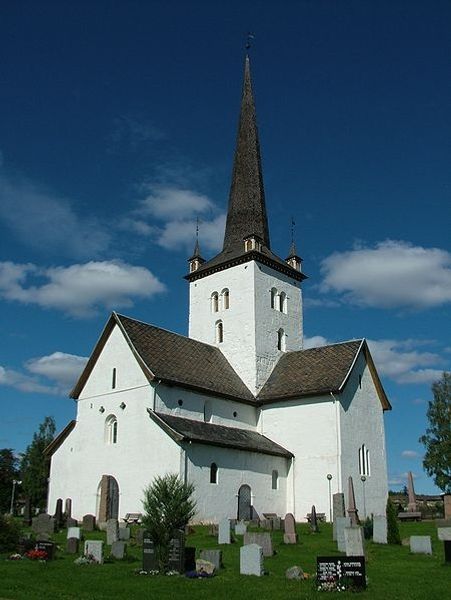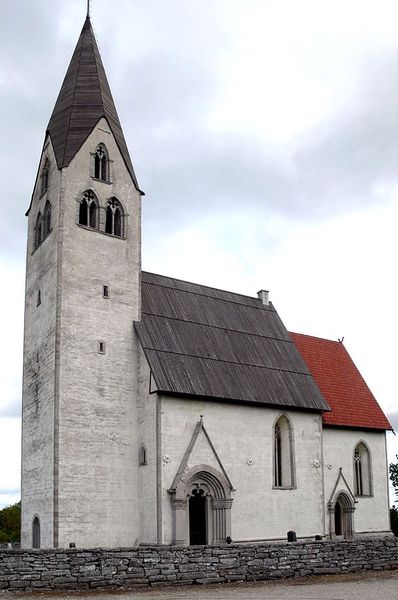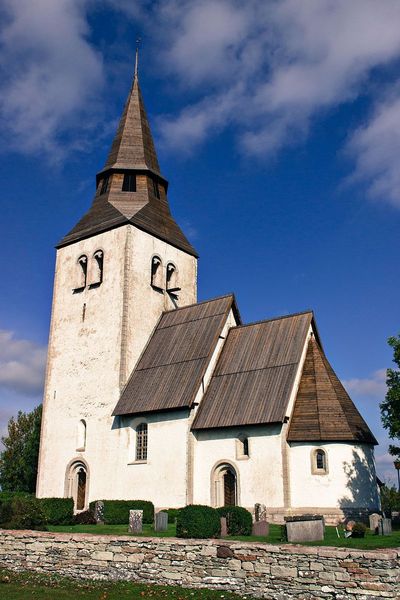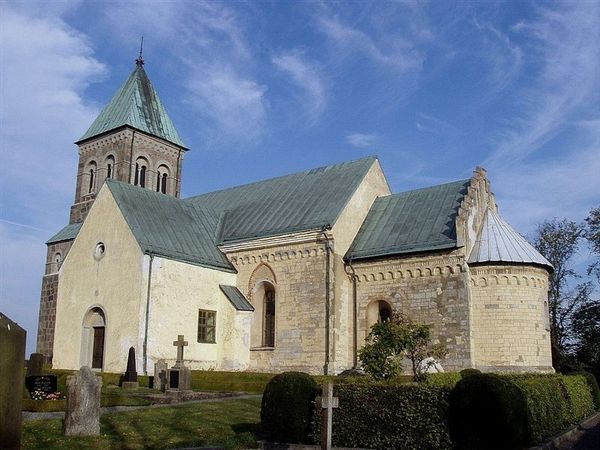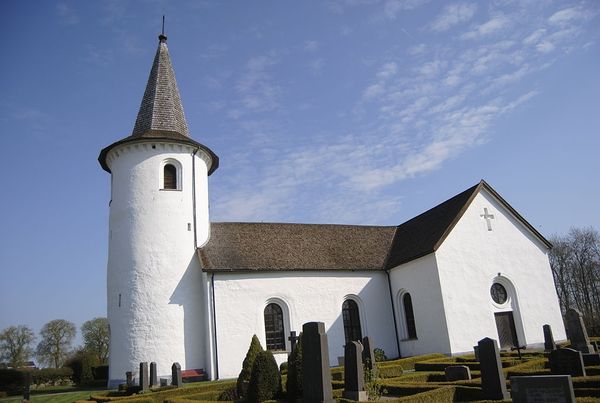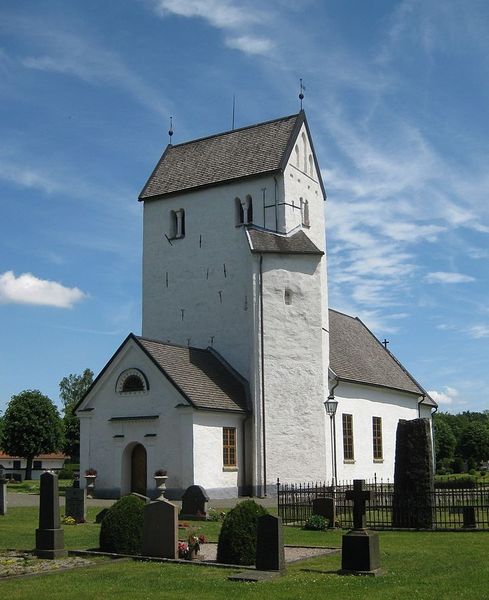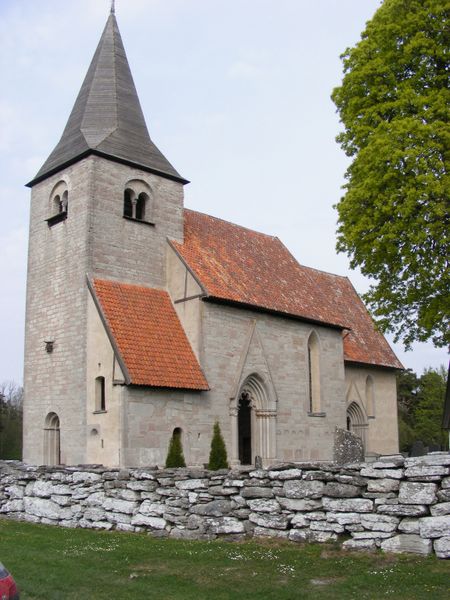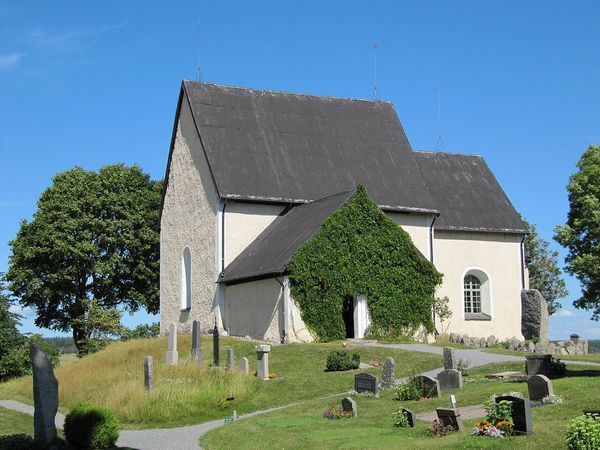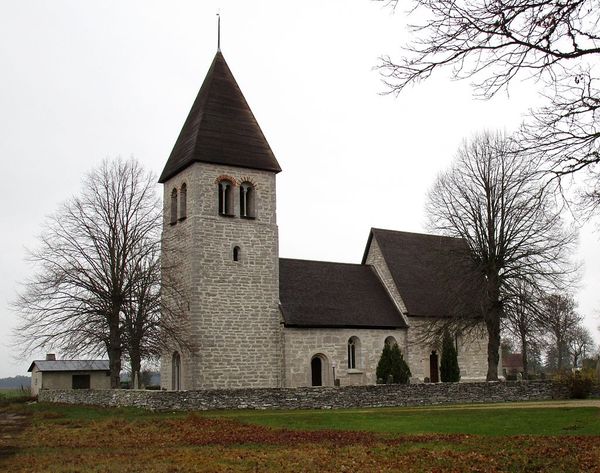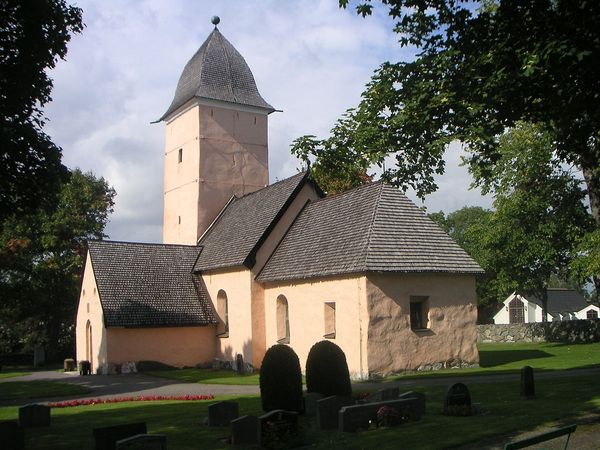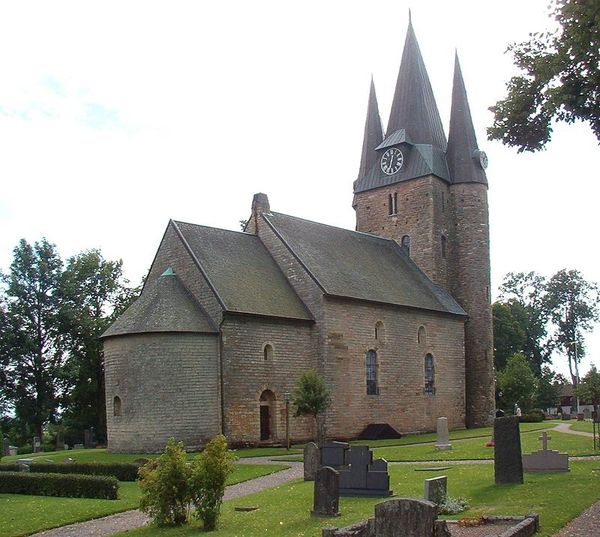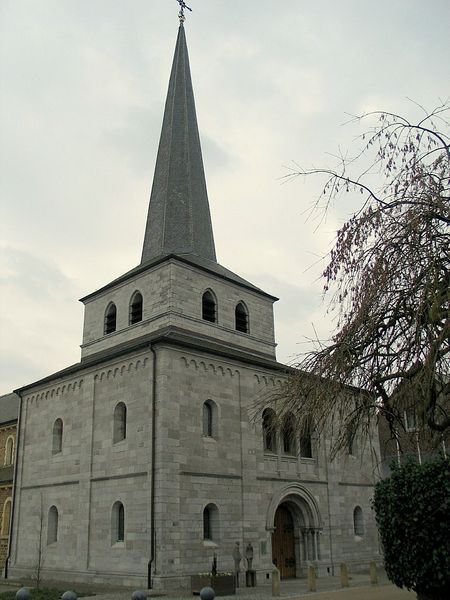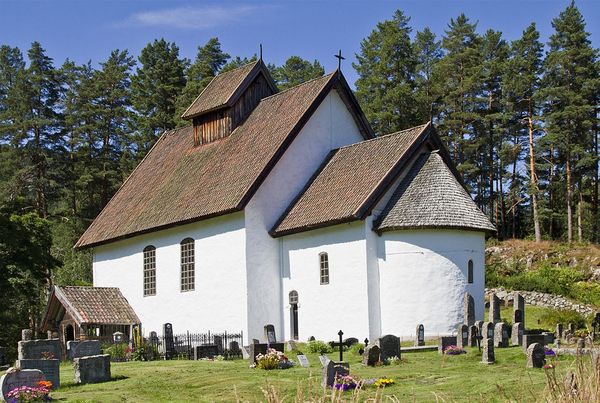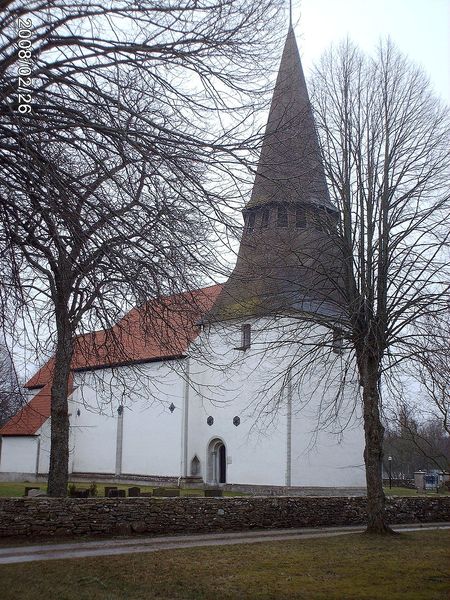
architecture
#
landscape
#
historic architecture
#
romanesque
#
architecture
Copyright: Public domain
Curator: What a striking image. It's a photograph of Fardhem Church, situated on Gotland Island in Sweden. Construction on the building finished around 1200. It’s a beautiful example of Romanesque architecture. Editor: It is! The stark white walls against that crisp blue sky and the snow-covered ground—the color palette is remarkably simple, yet dramatic. It’s so austere, even for religious architecture. Curator: It reflects the social structures of the time, definitely. Romanesque churches often projected power, both spiritual and temporal. Local materials were used to project cultural meaning while echoing established design ideas throughout Christendom. Gotland's location as a major trading hub surely shaped the materials and manpower available to build this. Editor: The roof almost appears to be constructed of wood tiles, it's fascinating. And it does make you wonder, where did those resources originate? Building on this scale, and to this design—that represented considerable consumption. Were these truly local materials and workmanship, or was this a statement dependent upon imported commodities and skills? Curator: That's a very valid consideration, actually. Church construction provided widespread employment opportunities, it boosted trade and attracted skilled stonecutters, carpenters, and artists. The labor was sourced locally, which can often provide income, as well as social and artistic opportunity. But in terms of building material, the very roof you mentioned likely took collaboration with merchants throughout the region. Editor: The use of Romanesque arches appears so calculated for impact. Even its physical orientation within the landscape speaks volumes. And that imposing spire suggests considerable effort. Curator: The design’s certainly meant to make a statement, yes. Romanesque style served to create specific devotional settings, reflecting the social order that the Church helped maintain and administer. And to reiterate that you can trace the materials and even workforce coming from a web of merchants and artists working at once locally, nationally, and sometimes internationally. Editor: Looking closer, the stone construction must have been arduous, given the time period and apparent limited tool-use. The material constraints surely impacted both aesthetics and structure. Curator: Exactly! We need to examine architecture such as this, yes, as part of this grand aesthetic movement, but equally to view the complex socioeconomic situations that afforded and conditioned it. Editor: I find myself considering all that unseen labor. It brings a human element that goes beyond aesthetic. Curator: Yes. Viewing this church with both lenses deepens the experience so profoundly.
Comments
No comments
Be the first to comment and join the conversation on the ultimate creative platform.
